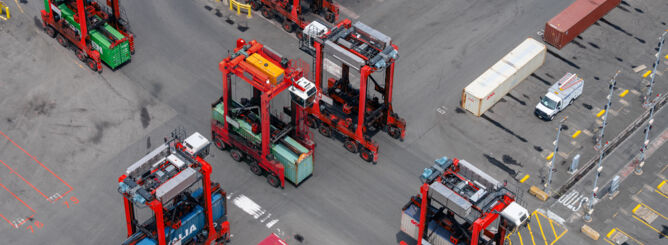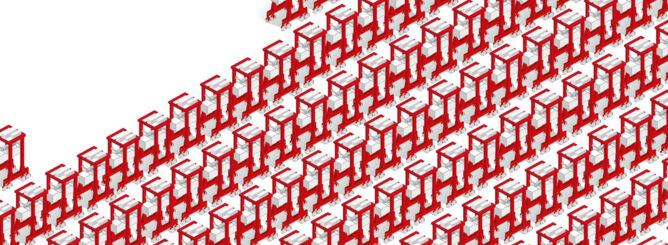Digitalisation enables intelligent approach to machine safety
The data and intelligence generated by Kalmar’s performance management tool has the capacity to not only significantly improve operational efficiency and sustainability, but also to make customer operations safer.
Safety is all about people. The majority of port accidents are operator-related and the cost of these accidents in terms of damage to goods, yard clean-up, machine availability, and operator absence can be considerable.
Worse still, accidents can lead to fatalities. According to International Cargo Handling Association data from 2019 there is a fatality every five days in the port sector – which means that more than 70 people lose their lives while working in a port every year.
“If we create a safe environment, we develop trust and we all know that trust is the basis of business,” explains Alejandro Garcia, digital solution sales manager, service solutions. “I came to Kalmar from the elevator industry, which became the safest transport sector in the world because it developed a zero tolerance policy for accidents.”
All stakeholders should be constantly working to identify unsafe actions, conditions and hazards and implement strategies and practices to address these risks.
“This is our primary goal as we understand that our customers and the customers of our customers have the right to demand zero port accidents,” says Garcia. “When safety is in doubt, trust is lost and if there is no trust, there is no business.”
All stakeholders should be constantly working to identify unsafe actions, conditions and hazards and implement strategies and practices to address these risks.
Any effective initiative to improve safety starts with creating high expectations and implementing improvements in processes and technologies. But none of these will succeed without commitment and engagement.
“We know that improvements in safety in the workplace come from all areas of the business, but those supported by digital solutions can have a profound and immediate impact” says Garcia. “Digitalisation will boost engagement and commitment through automation and standardisation, proactively and reactively analysing data and turning data into actions and information.”
Kalmar Insight (our performance management tool for cargo handling operations) contributes to increased safety in three main areas among others: access control, operations checks, and tracking.
Access control ensures that only authorised drivers have access to the equipment. Kalmar Insight users can also generate reports that help employees understand, engage with and commit to safer operations.
“Digitalisation will boost engagement and commitment through automation and standardisation, proactively and reactively analysing data and turning data into actions and information."
The second area is harmonisation of equipment safety, which ensures the machine is in the right condition to operate. Kalmar Insight helps customers create digital workflows and facilitates remote equipment management and reporting. It makes checking and updating the pre-operational checklist easy and ensures compliance with local regulations. No more missing pens and lost papers.
The third area is GPS tracking, through which behaviours can be analysed and recorded and working cycles can be planned to identify dangerous routes. The system records incidents and accidents, capturing data through sensors and using playback to analyse how the accident was caused.
“There are many other aspects of Kalmar Insight that can improve safety, such as the maintenance model that helps us plan and schedule preventative maintenance activities and location statistics to determine whether the machine is working or moving in the right area,” says Garcia. “These solutions help our customers build a consistent and solid safety system in terms of operator, equipment and fleet.”
Alejandro Garcia and Rebecca Nielsen, senior marketing manager services discussed how digital solutions can optimise customer safety during a webinar hosted by Kalmar in April – a recording of the webinar is available at https://www.kalmarglobal.com/news--insights/webinars/standardise-and-harmonise-your-safety/


